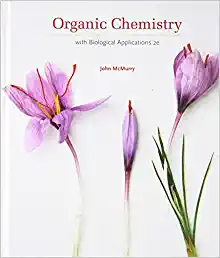5. The quaternary structure of hemoglobin significantly changes the oxygen binding ability. (a) A modified hemoglobin ( 22) protein has been prepared in the laboratory in which the sequence of subunit is slightly different from adult globin subunit. This modified hemoglobin does not bind to the 2,3-BPG allosteric modulator. Draw oxygen binding curves for this modified hemoglobin and normal adult hemoglobin. (b) Another modified hemoglobin protein has been prepared in the laboratory in which the proximal histidine of all four subunits has been replaced by alanine. (i) Briefly explain the expected change in the bonding of iron ion in the heme group of this modified Hemoglobin (ii) What are your thoughts about the oxygen-binding ability of this modified hemoglobin molecule? (iii) Imidazole was added to the modified hemoglobin solution thinking imidazole would fulfill the missing function of a proximal histidine residue. Would you expect the modified hemoglobin to show cooperative oxygen binding in the presence of free imidazole? Why or why not. (c)The mutation H146A if hemoglobin has been identified in a patient recently admitted to the hospital. H146 is the C-terminal residue of the -chain of hemoglobin responsible for the Bohr effect. How would this mutation be expected to affect oxygen unloading of hemoglobin primarily? Briefly explain your answer. (d) The pK. of an acid depends partly on its local environment. The Arg122 and Asp129 are in proximity of the tertiary structure of a protein that transports oxygen in insects. Considering the effect of Arg on Asp, predict the change in Asp129 pKs. Would you expect the pK. of Asp129 to be higher or lower when it is near an Arg residue? Explain your reasoning. 5. The quaternary structure of hemoglobin significantly changes the oxygen binding ability. (a) A modified hemoglobin ( 22) protein has been prepared in the laboratory in which the sequence of subunit is slightly different from adult globin subunit. This modified hemoglobin does not bind to the 2,3-BPG allosteric modulator. Draw oxygen binding curves for this modified hemoglobin and normal adult hemoglobin. (b) Another modified hemoglobin protein has been prepared in the laboratory in which the proximal histidine of all four subunits has been replaced by alanine. (i) Briefly explain the expected change in the bonding of iron ion in the heme group of this modified Hemoglobin (ii) What are your thoughts about the oxygen-binding ability of this modified hemoglobin molecule? (iii) Imidazole was added to the modified hemoglobin solution thinking imidazole would fulfill the missing function of a proximal histidine residue. Would you expect the modified hemoglobin to show cooperative oxygen binding in the presence of free imidazole? Why or why not. (c)The mutation H146A if hemoglobin has been identified in a patient recently admitted to the hospital. H146 is the C-terminal residue of the -chain of hemoglobin responsible for the Bohr effect. How would this mutation be expected to affect oxygen unloading of hemoglobin primarily? Briefly explain your answer. (d) The pK. of an acid depends partly on its local environment. The Arg122 and Asp129 are in proximity of the tertiary structure of a protein that transports oxygen in insects. Considering the effect of Arg on Asp, predict the change in Asp129 pKs. Would you expect the pK. of Asp129 to be higher or lower when it is near an Arg residue? Explain your reasoning







